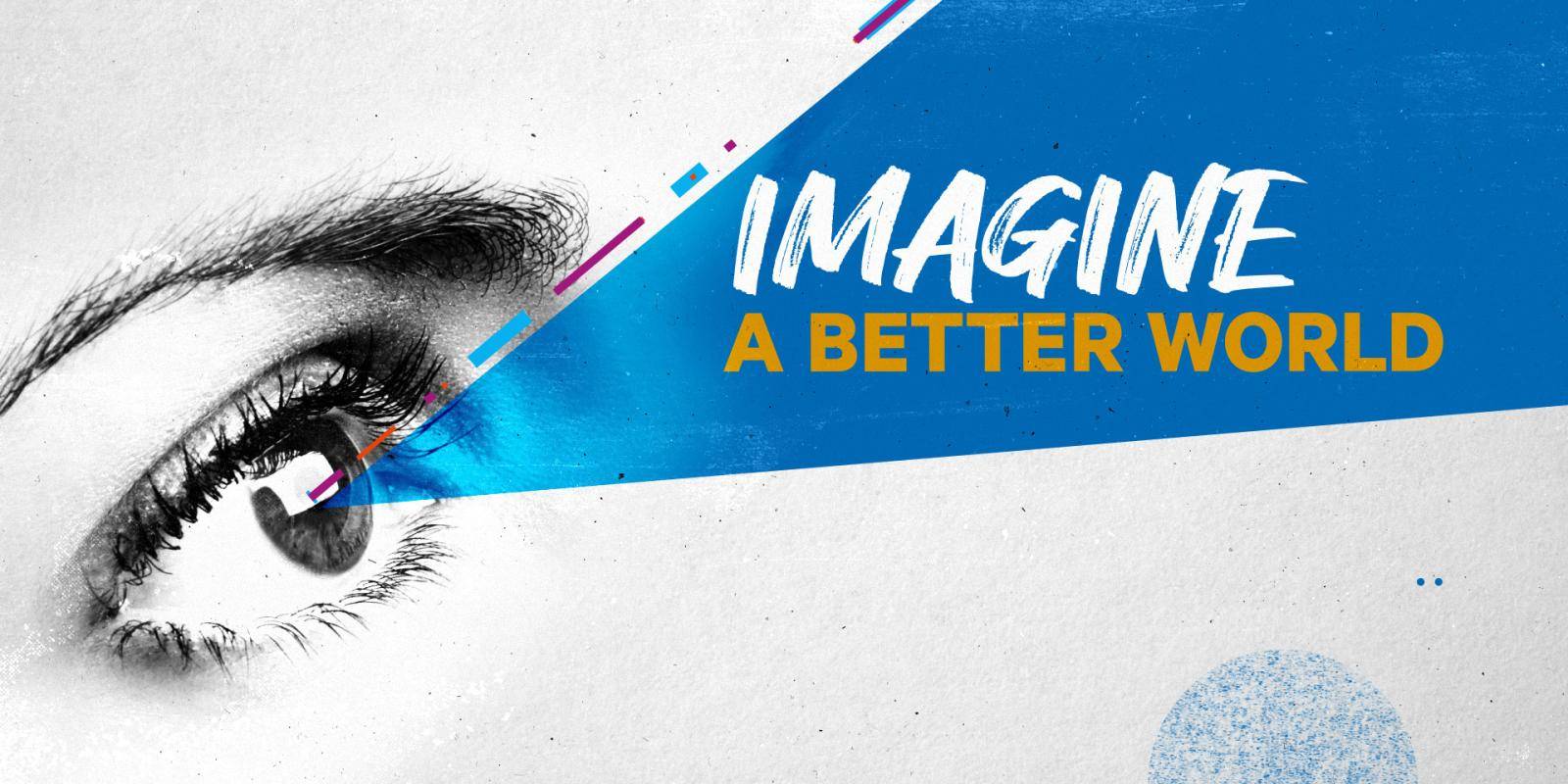The world can adapt to global challenges by implementing sustainable solutions for a better future. The adoption of eco-friendly practices, renewable energy sources, and reduction of waste can help create a better world for future generations.
The current state of the world is one of uncertainty and fear. Challenges, both local and global, have arisen that threaten the very foundations of the world as we know it. From climate change to resource depletion and pandemics, there are numerous issues that need addressing.
But there is hope on the horizon. By adapting to these challenges, we can create a better world for ourselves and future generations. This requires innovative thinking, sustainable solutions, and collective effort. It is not about small changes, but rather a fundamental shift in the way we live our lives. As a seo friendly content writer expert, i believe that by working together, we can create positive change and shape a brighter future.

Credit: www.chathamhouse.org
Technology As A Solution To Global Challenges
The Role Of Technology In Solving Global Challenges
We are currently facing multiple global challenges such as climate change, poverty, and disease, but technology is playing a critical role in providing solutions. Here are some key points about the role of technology in addressing these issues:
- Technology has enabled us to gather and analyze large volumes of data, which has helped us better understand complex issues. For instance, gathering and analyzing data on temperature changes has allowed us to be more proactive in addressing climate change.
- The internet has made it easier to share information and form global partnerships to address these issues. Collaborative efforts have been undertaken to combat global problems, in part, through the use of technology.
- Technology has helped us to develop more sustainable practices, such as the use of renewable energy, eco-friendly transportation, and efficient urban planning.
Examples Of Technology For Social Good
Many organizations use technology to work towards social good and positively impact the world. Here are some examples:
- The use of drones to deliver medical supplies to hard-to-reach areas has become more common in recent years. This has proven especially useful for providing medical aid to disaster areas and remote regions.
- Mobile technology has greatly facilitated access to education for people in developing countries. For instance, mobile apps like village math and ubongo kids teach children basic math and science concepts.
- The introduction of eco-friendly smart cities has impacted the environment positively, from water conservation and waste disposal to monitoring air quality.
Ultimately, technology is providing more efficient and effective solutions to global challenges, and if we continue to utilize and advance its capabilities, the possibilities for a better world are endless.
Collaborative Solutions To Global Challenges
Global challenges such as poverty, climate change, and inequality require collaborative efforts from various stakeholders to bring about lasting solutions. Successful partnerships among governments, businesses, and communities have demonstrated immense potential in addressing these challenges. Here are some examples of such partnerships:
- Public-private partnerships (ppp): Ppps bring together governmental agencies and private entities to co-fund and co-manage programs, with each partner contributing their unique strengths. For example, the world bank partnered with coca-cola to improve water quality and availability in developing countries.
- Social enterprises: Social enterprises operate by addressing societal issues while still earning revenue. These businesses leverage hybrid organizational models that prioritize social and environmental impact alongside profit making. For instance, warby parker provides affordable eyewear while donating a pair to someone in need for every pair purchased.
- Community-led initiatives: Community-led initiatives involve a collective effort to solve local problems, with community members driving the initiative. For example, the “barefoot college” initiative in india trains rural women to become solar engineers, providing them with the skills to install and maintain solar projects in their communities.
Collaboration has several benefits in solving global challenges. It enables access to diverse knowledge, skills, and resources, bringing different parties together, sharing expertise and tools, and enhancing innovation efforts. Furthermore, collaboration promotes a sense of ownership and builds trust among stakeholders, which is essential for the development of shared solutions and effective implementation.
By prioritizing collaborative solutions to global challenges, governments, businesses, communities, and individuals can leverage each other’s strengths to drive change at scale and create a better world for all.
Sustainable Development Goals
Overview Of The 17 Sustainable Development Goals Established By The United Nations
The united nations established 17 sustainable development goals (sdgs) to promote sustainable development across the globe. The sdgs aim to end poverty, protect the planet, and ensure that everyone enjoys peace and prosperity. Here is a brief explanation of each sdg:
- No poverty: End poverty in all its forms everywhere.
- Zero hunger: End hunger, achieve food security, and improved nutrition and promote sustainable agriculture.
- Good health and well-being: Ensure healthy lives and promote well-being for all at all ages.
- Quality education: Ensure inclusive and equitable quality education and promote lifelong learning opportunities for all.
- Gender equality: Achieve gender equality and empower all women and girls.
- Clean water and sanitation: Ensure availability and sustainable management of water and sanitation for all.
- Affordable and clean energy: Ensure access to affordable, reliable, sustainable and clean energy for all.
- Decent work and economic growth: Promote sustained, inclusive and sustainable economic growth, full and productive employment, and decent work for all.
- Industry, innovation and infrastructure: Build resilient infrastructure, promote inclusive and sustainable industrialisation, and foster innovation.
- Reduced inequalities: Reduce inequality within and among countries.
- Sustainable cities and communities: Make cities and human settlements inclusive, safe, resilient and sustainable.
- Responsible consumption and production: Ensure sustainable consumption and production patterns.
- Climate action: Take urgent action to combat climate change and its impacts.
- Life below water: Conserve and sustainably use the oceans, seas and marine resources for sustainable development.
- Life on land: Protect, restore and promote sustainable use of terrestrial ecosystems, sustainably manage forests, combat desertification, halt and reverse land degradation, and halt biodiversity loss.
- Peace, justice and strong institutions: Promote peaceful and inclusive societies for sustainable development, provide access to justice for all and build effective, accountable and inclusive institutions at all levels.
- Partnerships for the goals: Strengthen the means of implementation and revitalize the global partnership for sustainable development.
Identify The Correlation Between The Goals, Global Challenges, And Solutions
The sdgs address the most pressing global challenges, and many of them are interconnected. Poverty, climate change, food insecurity, and gender inequality are just a few of the issues that the sdgs aim to tackle. Here are some ways in which the sdgs relate to each other:
- Poverty and hunger (sdgs 1 and 2) are linked to each other. Poverty leads to hunger, and hunger perpetuates poverty.
- Climate change (sdg 13) and sustainable cities and communities (sdg 11) are closely related. Climate change is caused by greenhouse gas emissions, which are linked to urbanization and transportation.
- Gender equality (sdg 5) and quality education (sdg 4) are linked to each other. When girls are educated, they are more likely to become empowered and have greater access to job opportunities, which leads to gender equality.
- Decent work and economic growth (sdg 8) and industry, innovation and infrastructure (sdg 9) are closely related. Economic growth requires innovation and infrastructure to flourish.
To address these global challenges, individuals, organizations, and governments must work together towards achieving the sdgs. Together, they can promote sustainable development across the globe.
Highlight The Role Of Individuals And Organizations In Achieving These Goals
Every individual and organization can contribute to the achievement of the sdgs. Here are some examples of how individuals and organizations can contribute:
- No poverty (sdg 1): Organizations can create job opportunities for people who are living in poverty. Individuals can donate to organizations that provide support to people living in poverty.
- Good health and well-being (sdg 3): Individuals can get vaccinated, exercise regularly, and eat a healthy diet. Organizations can provide healthcare services and education to promote good health.
- Quality education (sdg 4): Individuals can volunteer in schools or tutor students. Organizations can provide scholarships and promote teacher training programs.
- Affordable and clean energy (sdg 7): Individuals can reduce their carbon footprint by conserving energy and using renewable energy sources. Organizations can invest in renewable energy and promote energy efficiency.
- Sustainable cities and communities (sdg 11): Individuals can use public transportation, bike, or walk instead of using their cars. Organizations can invest in sustainable infrastructure and promote eco-friendly practices.
The sdgs are crucial for promoting sustainable development across the globe. By identifying the correlation between the goals, global challenges, and solutions, individuals and organizations can work together to achieve the sdgs and create a better world for future generations.
Frequently Asked Questions On Adapting To Global Challenges: Solutions For A Better World
How Can Individuals Contribute To Global Solutions?
Individuals can reduce their carbon footprint, conserve resources, and support sustainable products and practices.
What Are The Benefits Of Global Collaboration?
Global collaboration can lead to innovative and effective solutions, increased resources, and a sense of shared responsibility.
How Can Technology Help Solve Global Challenges?
Technology can facilitate communication, enhance efficiency, and provide solutions such as renewable energy and clean water.
Conclusion
As we have seen, global challenges continue to emerge and test our ability to adapt and overcome them. However, this also presents an opportunity for individuals, businesses, and governments to come together and work towards a better world. By adopting sustainable practices, prioritizing education and innovation, investing in social programs, and using technology wisely, we can create a more equitable, just, and resilient society.
There is no doubt that we are facing complex and interconnected issues, but with cooperation and determination, we can find solutions that benefit all. It is up to each and every one of us to do our part and contribute to a brighter future.
Let us not focus on the challenges alone, but rather the opportunities they present and the positive impact we can make together.

